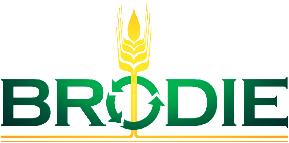To read this article in French, click here.
Over the past few years, we have seen an increase in the number of foreign workers on dairy farms who have entered their positions on a work permit. The difficulty in attracting and retaining a local workforce has become almost impossible and the need to employ foreign workers is a positive solution. Although the process is a lengthy and time-consuming endeavor, the rewards of this effort are proving to be well worth the investment.
While employing foreign workers is a great solution, we must not forget about the importance of safety with this group of employees. The language barrier, cultural differences and emotional stress from being away from home all create a greater need to ensure that health and safety is a big consideration for this vulnerable worker population. Vulnerable workers are those who recently moved from another province or country.
Arvin came to work at a dairy in Ontario on a work permit from the Philippines. Although he had exposure to farming in his home country, things here in Canada were quite different. The dairy he had been exposed to had 10 milking cattle and was a completely manual process. Never had he seen such a large herd, nor ever dreamt that robots would be used to milk, and the milk would be distributed directly to the milk tank without having to carry it by hand.
Needless to say, the large equipment was rather intimidating to be around. He had never been exposed to a power take-off (PTO) and did not know that this could rip through his flesh and tear a limb completely off. His employer, however, had a solid safety program in place to make sure that Arvin’s safety was in check and took the extra time to show Arvin firsthand how things operated and what could possibly go wrong.
When employing foreign workers, we suggest you take these seven essential steps.
Step 1
Hire an English-as-a-second-language consultant/teacher to come to your location on a regular basis, ideally a weekly basis, and commence the process of breaking down the language barrier. Your local employment office should be able to assist you with finding this resource.
Step 2
Access a good translation app on your phone, so that during conversation you can use this tool to translate key words, phrases and conversations.
Step 3
Have your safety procedures, posters, inspection checklists and other safety information translated into your workers’ spoken language. There are many great online freelance translation sites where you can hire a translator to turn your documents into your workers’ language. Make sure they understand the procedures by asking questions and allowing them to ask questions. Make sure they know what personal protective equipment to use for each task and how to use, inspect and store it.
Step 4
Formal safety training and hands-on training is so critical with a foreign worker. Take the time to break down their tasks into simple steps and work alongside them to visually show them how to conduct each task safely. When you are training, make sure to start them slowly into their job so they can master a few tasks before you add on additional duties. Make sure they understand the instructions and encourage them to ask questions.
For formal safety training, we recommend using online training modules in their spoken language so that they fully understand the safety requirements. Online training is often more readily available in various languages as opposed to in-person training.
Make sure you keep a record of all training, including hands-on training. Complete documented evaluations to ensure they are competent to complete high-risk tasks such as operating farm equipment.
Step 5
Meet with your foreign workers daily and spend quality time talking to them and asking them lots of questions about how they feel things are going in their new position and in their new environment. Reinforce that it is OK to ask questions and be honest about how things are going. Create an environment of “open-door” communication.
Step 6
Don’t forget that things outside of the barn will be very new and fresh for your foreign worker. Something as simple as providing them with an air fryer in the house kitchen may pose a huge safety risk, as they may never have been exposed to this kind of cooking equipment in their home country.
Step 7
Consider hiring additional foreign workers from your existing workers’ home location. A lot of times they have other family members who are interested in the same kind of employment. This social circle will help with alleviating the emotional toll.
Overall, it is important to look at all angles of safety for your foreign worker. They are depending upon you to ensure their safety comes first.









